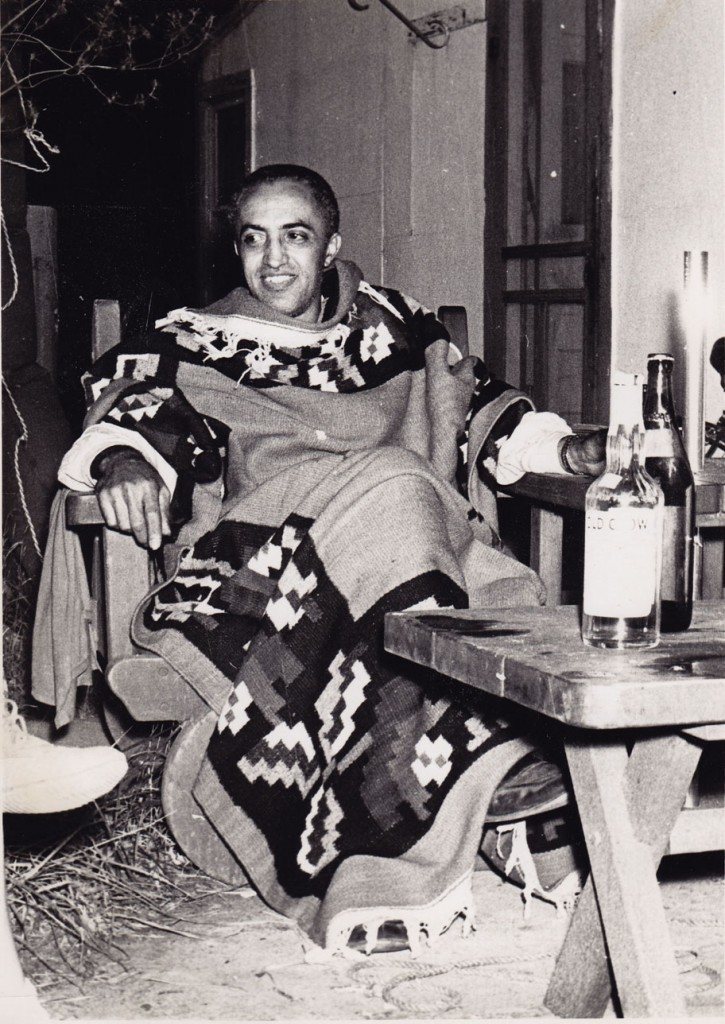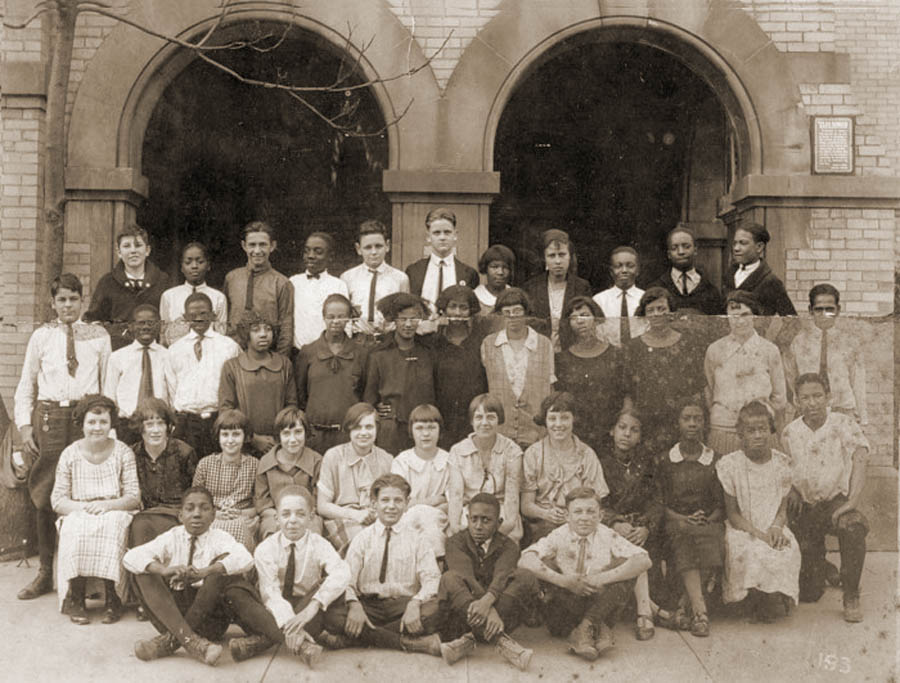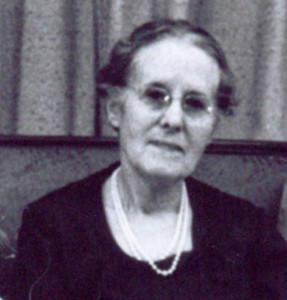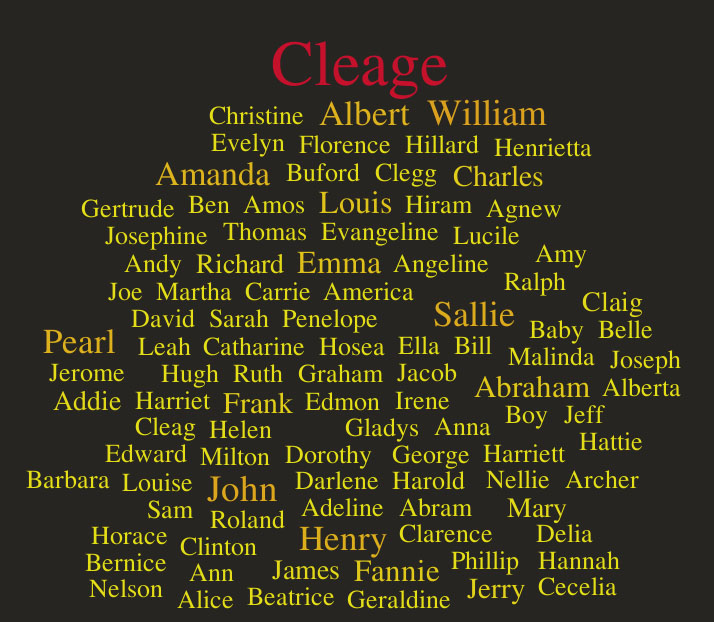
I’ve written other posts about Idlewild which you can see here: Building Uncle Louis’ Cottage, On Lake Idlewild, Idlewild 1953 – Sentimental Sunday



I’ve written other posts about Idlewild which you can see here: Building Uncle Louis’ Cottage, On Lake Idlewild, Idlewild 1953 – Sentimental Sunday


Inspired by a Facebook post by my cousin Nikki, I went through my collection of The Illustrated News and found the first mention of the Freedom Now Party (FNP). In the days to come, I will be posting a series of The Illustrated News issues that mention the FNP. There is a lot of reading there but I hope some will wade through it. This is the September 2, 1963 issue. The story about the FNP is on page 2. Other posts about the FNP are The Freedom Now Party Convention 1964 and Interview with Henry Cleage. Click any image to enlarge.
The Illustrated News was published during the early 1960s by my father’s family and family friends. Two of his brothers, Henry and Hugh, started a printing business because the family was always looking for ways to be economically independent. The main business was printing handbills for small grocery stores. They started several newspapers. First they did The Metro but the one I remember best is The Illustrated News. It was printed on pink paper (that was what was left over after printing the handbills) and distributed to churches and barber shops around the inner city. Some people had subscriptions. My father wrote many of the lead articles. My Uncle Louis wrote Smoke Rings, which was always on the back page. Billy Smith took most of the photographs.
I have been writing this post for way too long, getting lost in research and real life. A Sepia Saturday prompt a week ago featured a posh hotel and made me start to work again. This post does not feature a hotel, rather the lack of one because black motorists back in the 1930s were not welcome in white hotels as they traveled. In 1936 The Negro Motorist Green Book began publishing and shared information about lodging places that Negro motorists could be sure of a welcome. Before that people stayed with friends or friends of friends or kept driving. Click on all images to enlarge.
I had been unable to find my great grandmother, Anna Celia Rice Cleage Sherman’s death date or death certificate before finding the above item. After jumping up and down shouting my joy at finding the date, I began to wonder who the Cobbs where that my grandfather and his brothers stayed with. I came across several other items from different years, with various family members stopping with the Cobbs in Richmond, KY on their way to or from Athens, TN. How did my family know the Cobbs and who were they?
John Wesley Cobb was born in 1882 in Richmond, Kentucky to Squire and Malinda (McCallahan) Cobb. His parents were born in slavery in the 1846 and 1859. By 1889 Squire Cobb was an important member of Richmond’s black community. He was a barber with his own shop, a member of the Knights of Pythias, and St. Paul’s African Methodist Episcopal church. Malinda Cobb birthed 9 children. Six lived to adulthood. Both parents were literate and the children attended school. John and one of his brothers were tailors. His sister Susie was a teacher before her marriage. His oldest sister, Lena, married a barber. Malinda Cobb died in 1916. Squire Cobb died at about 89 years of age in 1935.
John Wesley Cobb married Bessie Pollard about 1803. They had one daughter , Leona Cobb, in 1904. They later divorced and both remarried. John second wife was Lillian Titus, who taught school when they were first married. They had no children.
JW Cobb started as a tailor for the R.C.H. Covington Company, a department store in downtown Richmond. He sewed on clothes like the one pictured in the advertisement below. Later Cobb, was able to open his own tailor shop and he continued to work on his own account through out the following years.
John W and his wife Lillian owned their own home at 311 First Street. John Wesley was an active member of St. Paul A.M.E. Church. In several news items, he is listed as Rev. JW Cobb, assisting the Pastor at funerals. I suspected that the paper had the wrong name but I just found him in the death index on FamilySearch and his title is given as Rev. In 1935, the Cobbs presented gold footballs to the football team at an awards banquet. I wish there had been a picture or a description as I don’t know if they were little pins or full size footballs!
He and his wife appeared regularly in the news/society items in the Richmond Colored Notes. He served as secretary for the group that sponsored the Madison County Colored Chautauqua.
On December 16, 1946 Lillian Cobb died from breast cancer that had spread to her spine. Her husband was the informant. On the 28th of February 1958, John Wesley Cobb died. I have not yet found his death certificate, and I do not know what he died from.
For several years Lillian Titus Cobb, before her marriage, lived in Indianapolis, Indiana with her sister Susie Titus White while Susie’s husband, Rev. D. F. White was the pastor of Witherspoon United Presbyterian Church. My grandparents, Albert B. Cleage and Pearl Reed (later Cleage), were members.

Links that might interest you.
The Kentucky Colored Chautauqua 1916
Madison County Colored Chautauqua 1915
On the way to bury their mother
Celia’s Death Certificate

A copy of the Illustrated News, published by Henry Cleage, other family members and friends from 1961 to 1964. It came out several weeks after the massive Detroit Walk to Freedom down Woodward Avenue on June 23, 1963. Click the link above to read an Illustrated News issue covering the march.
The inside pages are reprinted from The National Observer and Business Week June 29, 1963. The cover photo was taken by William “Billy” Smith. The “Smoke Rings” on page 8 were written by my uncle, Dr. Louis J. Cleage. Click on any image to enlarge.

 My father, Albert B. Cleage, Jr (front row, second from left), with his 8th grade class at Wingert Elementary School in Detroit, Michigan. He was 12 years old. It was 1923. In Detroit, it depended on what community you lived in whether the school you attended was integrated or not. My uncles said that the abundance of white children in this class was due to the white orphanage across West Grand Blvd from Wingert.
My father, Albert B. Cleage, Jr (front row, second from left), with his 8th grade class at Wingert Elementary School in Detroit, Michigan. He was 12 years old. It was 1923. In Detroit, it depended on what community you lived in whether the school you attended was integrated or not. My uncles said that the abundance of white children in this class was due to the white orphanage across West Grand Blvd from Wingert.
When my father and his siblings graduated to Northwestern High School, there was a much smaller percentage of black students and, depending on the teacher, more or less discrimination. There are many tales of my grandmother going up to the school to demand that her children not be seated in the back of the classroom and other outward signs. I wish I had interviewed her.
I am going to quote now from a biography of my father, Prophet of the Black Nation, written in 1969 by Hiley Ward, . The following is taken from pages 74 – 78.
Cleage, who attended Detroit public schools draws some of his militantism on schools from his own experiences with discrimination back in the 20’s, particularly his high school, Northwestern, which was nearly all white at that time but is nearly solid black now. He remembers, “I didn’t like anything about it. There were all kinds of discrimination.” the school clubs were closed to blacks, he says, “It was a horrible atmosphere, and I took part in as little as possible.” He recalls that the teachers would always put the black youths at the back of the classroom. “It was dismal. My parents would go up and raise enough donnybrook and hell to take care of the situation (classroom seating, etc.)”; but,he says, they were powerless to penetrate the fabric of discrimination by the white teachers and administration. “It wasn’t the students, so much as the administration.” Cleage took a try at the 440 in track, which by his own admission was “nothing great,” and he says several black students were able with much effort to break into the predominately white school’s team sports. His brother Henry, now an attorney for the Neighborhood Legal Services, was “first cellist in the school orchestra; but every time they had a concert they tried to place him so it would appear that he was not the first cellist. This was trivial, but…”
Cleage’s sister Gladys remembers how her father helped form the Wingert school PTA and was instrumental in getting the first black teacher by means of a petition.”He would argue with the school board and everybody else.”

Cleage’s mother said of the schools her boys attended (Wingert Elementary and Northwestern), I had to fight for them all the way through, for I knew a mistreated child could have a blight for years…if a child said he was having trouble naturally, I’d go up to see about it.”
Albert “is a great talker now,” she said, “but in high school he was not much of a talker unless he had something specific to say,” She remembers going in to see on English teacher who told her, “Albert doesn’t smile or talk much.” “And I said, ‘Is there anything to smile or talk about?’ She had sent him down to the principal to see if the principal could make him talk, and the principal said, ‘Well, Albert, you are not much of a talker,’ and sent him back. The English teacher talked about grades. I said, ‘He came to you with an A. Send down to the office and see the record for yourself, and you keep him to a C – ridiculous! I say he’s an A student! If he doesn’t work, you can still hold him to a C. But I thought you graded on work.’ She was foolish. Another teacher said his papers were too lengthy. But God does not make us all alike. God made some minds to be emphatic… Louis – now the M.D. – could write short papers. Louis just put it down, but you can’t grade this son by his younger brother’s method.”
Mrs. Cleage, the 81-year-old matriarch, watched me closely as I wrote down her words. “I feel sorry for parents raising colored children.” she said, “for so many don’t have the fight like I do.” Perhaps I grinned a little at this point, in admiration of the energy of this tremendous lady still full of the old vinegar for her sons. “You smile, but you don’t know,” she said “You have to do something in a country like the United States.”
She did the same with all her youngsters. “Louis was brokenhearted when he got a C in chemistry. So I went to his counselor. ‘You come with me,’ I told him. ‘I’m taking him out of that class. I can’t have a child ruined by a man who hates colored people.’ I took him to another class, and the new teacher was amazed – he was an A student all along.” Daughter Barbara recalled that “there was a teacher who opened the door by the top where no ‘colored’ child touches the door.” She recalls her mother telling the principal, “I can’t stand this. This girl and other children are too fine. Take that polluted woman out.”
You can see a photo of Wigert school at this link. Below is a photo I took about 2005 of the main doorway, where I think the photo was taken.

Here is my father, Albert B. Cleage Jr, playing chess at his parents house about 1952. We lived down the street on Atkinson in the parsonage at the time. We have played a lot of chess in my family through the years.
I remember my Uncle Henry teaching me to play chess when I was in my teens. When I first met my husband, we spent hours playing chess on the second floor of the student center in Mackenzie Hall Below is a bit of a letter I wrote to my sister in 1966 that begins with a game of chess.
I am in bed with the flu. Monday night, I was playing chess with Henry when I developed chills. My teeth were chattering and I had goose pimples. I thought I was gong to die. just my luck to get sick on payday. I got two patterns Friday. I have to get some material now. I want some blue material with little black flowers for the suit.
I spent the weekend with (my cousin). I got high once on Saturday night. I didn’t like it. It was like everything was floating and everything was real slow. My thinking too, also my voice sounded real far away . This guy was there, he was talking and I was looking at him and I could hear him, but it was like someone else was talking. Very, very weird!!! I could still think, I knew I was high and what I was doing. It wasn’t my idea of fun and I doubt if I’ll ever do it again.
Sunday morning I went horseback riding. I really liked it. Me and (my cousin) and her friends went. Riding was really nice, but I was a little scared when the horse first started to run or trot or whatever you call it. I’m just a little sore.
Stokely (Carmichael) is supposed to be here in a few weeks at church. Linda and I finished our 15 page each quota of bruning at work by 12:30 Friday, so we messed around the rest of the day. Both Linda’s and my dress shrunk so now we have mini dresses.
On Friday (my cousin) and I went to the drive-in and saw “Breakfast at Tiffiny’s” and “Who’s Afraid of Virginia Wolf” I liked the first, but, who the hell is Virginia Wolf? Higgins paper came out. Bar’s baby has measles. Everybody at work is singing La Bamba now, due to my great influence.
Unfortunately, I do not think I ever went horseback riding again. I never really took to getting high. It’s hard to believe I didn’t know who Virginia Wolf was. Luckily, in one of my early English classes, we had to read her book, Mrs. Dalloway.
The photograph in the header is my grandson Sean playing chess with himself four years ago. He would make a play and then make a play for the other color, often going around to the other side to make the play.
The birth of my tenth grandchild earlier this week made me wonder how many grandchildren the women in my family had in the past. I combined this with when they had their first child and how many children they had. Here is what I found.
I was born in 1946. My oldest daughter was born in Detroit in 1970 when I was 23 years old. My youngest son was born when I was 41. My first grandchild was born when I was 52. I was 68 when my youngest grandchild was born. I have six children and ten grandchildren.
My mother, Doris Graham Cleage, was born in Detroit Michigan in 1923. She gave birth to two daughters. The oldest (me) was born when she was 23 in 1946. My sister was born in 1948 when my mother was 26. I had 6 children and my sister had 1. My mother was 47 when her first grandchild was born and she would have been 64 when her youngest grandchild was born. Doris had two children and seven grandchildren.
My maternal grandmother, Fannie Mae Turner Graham, was born in Lowndes County, AL in 1888. She gave birth to 4 children, all in Detroit. The first was born in 1920. The fourth was born in 1928 when she was 40. Both boys died in childhood. Fannie’s oldest daughter (my aunt) had 3 children and my mother had 2. My grandmother was 56 when her first grandchild was born. She was 65 when her youngest grandchild was born. Fannie Mae had four children. Two died in childhood. She had five grandchildren.
My paternal grandmother, Pearl Reed Cleage, was born in 1886. Her first child was born in 1911 when she was twenty five. Her youngest child was born in 1924 when she was thirty nine. Her first grandchild (me) was born when she was sixty years old. She was seventy six when the youngest grandchild was born. Pearl had seven children and nine grandchildren.
Pearl’s mother, my great grandmother Anna Allen Reed She was born about 1849. She gave birth to her first child when she was 16, in 1865. She gave birth to my grandmother Pearl, her youngest child, when she was 37. Anna was 40 when her first grandchild was born. She had been dead for 15 years when her youngest grandchild was born in 1924. Anna had eight children and thirty-six grandchildren.
My great grandmother, Celia Rice Cleage Sherman was born about 1855 in Virginia. She was taken to Tennessee as a small child. Her first child was born in 1873 when she was eighteen years old. Her youngest child was born in 1883 when she was 28 years old. Celia’s first grandchild was born in 1897 when she was 42 years old. She was 69 when her last grandchild was born in 1924. Celia had five children and twenty-one grandchildren.
My maternal great grandmother, Jennie Virginia Allen Turner, was born free in 1866 in Montgomery, AL. She gave birth to three daughters. The first two daughters were born in Lowndes County. My grandmother was the oldest, born in 1888 when Jennie was 22. Daisy was born in 1890. In 1892 Jennie’s husband died. She later remarried and her youngest daughter was born in Montgomery, AL in 1908 when she was 42. Of her 3 daughters, only my grandmother had children. Jennie Virginia Allen Turner had three children and four grandchildren.
My maternal 2X great grandmother, Eliza Williams Allen was born into slavery about 1839 in Alabama. She gave birth to 13 children. Eight survived to adulthood. All were born in Alabama. The oldest daughter was born into slavery in 1856. Eliza was about 17 years old. Her other children were born free in Montgomery, AL. Her youngest child was born in 1879 when Eliza was 40. Eliza had thirteen children and eighteen grandchildren.
My 3X maternal line great grandmother, Annie Williams, was born into slavery about 1820 in Virginia. I only know of one child, Eliza above, who was born in Alabama in 1839 when Annie was about 19. Annie died before the 1900 census so did not answer the question “How many children did you give birth to?” There is no oral history of Eliza having siblings. Annie had one daughter and eight grandchildren.
****************
My 2X great grandmother Emma Jones Turner was born into slavery about 1842 in South Carolina. She was later taken to Alabama. She gave birth to ten children. Six of the children survived to adulthood. Her first child was born when she was about 18 years old and the youngest was born when she was 30. Emma had ten children, and sixteen grandchildren.

I do not remember seeing my parents dressed up for this dance. I was six years old. I do not remember ever seeing my parents dressed up and going out. After we moved off of Atkinson to Chicago Blvd, I remember that my mother had several fancy gowns hanging in her closet.
I looked for information about an Alpha dance in Detroit in 1952. I couldn’t find anything. Neither of my parents were members of a sorority or fraternity. I am assuming that some members of the church invited them to the dance.
“In 1951, when I was four, my father received a call to St. Marks Presbyterian church in Detroit. We left Springfield, Massachusetts and moved into 2212 Atkinson, down the street from my paternal grandparents who lived at 2270 Atkinson. St. Marks was located a block away, in the other direction, on 12th Street. The 1967 Detroit riot started a block from the church.” For more click A is for Atkinson.
Moving from Springfield to Detroit in 1951.

This is my third year participating in the A to Z Challenge. This year I blogged a series of sketches about the free people formerly enslaved on the Cleage plantations in Athens, Tennessee. I also wrote about some of their decendents.
I found myself (once again) spending pretty much all day, everyday researching and writing up my posts. I thought I had already done a lot of the research but once I started writing people up, I found there was more I wanted to know about their lives. Sometimes I spend a lot of time looking and did not find the information. Other times, it would appear unexpectedly.
I had a limited amount of time to visit other blogs and tended to visit the same ones when I found some I enjoyed. It was difficult to find blogs that I was interested in by the hit and miss method I employed using the gigantic list. I had more luck visiting people who commented on blogs I already enjoyed. I also followed people I knew from past challenges and other prompts I participate in throughout the year, Sepia Saturday for instance.
Three of the blogs I consistently followed were: MopDog, Stories I Found in the Closet, and Tell Me Another. I think it would be a good idea to mention blogs we especially enjoy during the challenge. I need all the help I can get to find those I enjoy. A blog I found late in the challenge through a comment on someone’s fb page that I will be catching up on and following is Modhukori. Three blogs that I visited regularly from Sepia Saturday were: Bob’s Home For Writing, Family History Fun and Anne’s family history.
I will be doing the challenge in 2016. I like the way it makes me think about my topic and dig up information and actually write it up. My tendency is to get lost in researching. I am very glad that Arlee Bird, at Tossing it Out thought up A to Z and put it into action.
A list of my posts for the April Challenge with links.

with names beginning with the letter Z. For this year’s April A-Z Challenge I have been blogging a series of sketches about the free people formerly enslaved on the Cleage plantations in Athens, Tennessee and their desendents.
